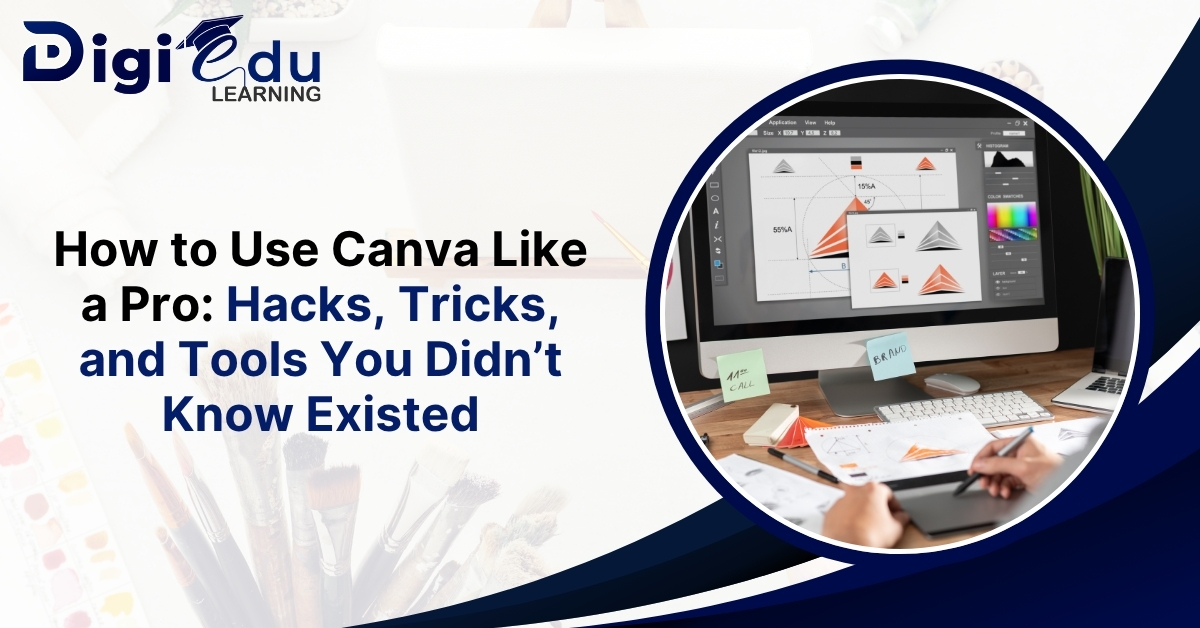How to Use Canva Like a Pro: Hacks, Tricks, and Tools You Didn’t Know Existed

Canva has quickly become a Go-to design platform for marketers, content creators, small business owners, and even teachers. It is a user-friendly, accessible from anywhere, and packed with a ready-to-use template that can save you hours. But here is the truth: most users are only scratching the surface.
If you have ever thought that Canva was basic or limited, you are missing its most powerful characteristics. In this guide, you will reveal how to use Canva like a pro by tapping into low-knowledge hacks, tools, and time-saving tricks, even the designers were ignored.
Understanding Canva’s True Power
Canva is not just for social media graphics or quick presentations. Over time, it has developed into a full design suite that is capable of producing videos, websites, product mockups, and even animated materials. Pro distinguishes users from casual people that they detect their abilities.
Setting Up Like a Pro: Customizing Your Workspace
Start by organizing your field for productivity. Make folders to manage projects and customers. Use “brand kit” to upload fonts, logo, and color palettes. If you are handling many customers or maintaining stability in your brand, it is particularly valuable. Whenever you are over a time limit, it allows for setting the template, a coherent, sharp design construction.

Advanced Text Effects and Typography Control
Most users apply basic fonts and proceed, but Canva allows granular control over text effects. Use a curve tool to wrap the text, adjust the vacancy to emphasize, and apply shade or outline to create hierarchy in your designs. Mix it with a custom uploaded font for unique typographic branding.
Unlocking Canva’s Hidden Elements and Assets
Search filters are your best friends. Type keywords with ddescriptorslike “Animated,” “Transparent,” or “Minimum” that do not appear in regular feeds to find design elements. Pro users also use the integration of canva with pixels, pixaboys and bitmosies, providing free and dynamic content.
Working with Layers and Positioning Like a Designer
The layering is not just for Photoshop. In Canva, you can bring the elements forward, send them back, or lock the item to maintain alignment. This becomes important when you are working with a complex view or mimicking a high-end design layout. Use the “status” tool to properly align the elements without manually nude.
Using Grids and Frames to Structure Layouts
Grids are basic for clean design. Canva allows you to pull and leave images in pre-set frames and grids that maintain the ratio. This visual reduces dislocation and brings a harmonious layout without design experience. Try to mix the grid with transparency and overlay to make depth and speed.
Animation and Video Editing Tools
Looks like Canva is just static? Think again. With native video editing tools, you can trim clips, conscious transitions and layer music or voice-over. This feature makes it ideal to create Instagram reels, youtube intro, or animated pitch deck without leaving the platform.
Collaborating on Real-Time Projects
If you are working with a team, Canva Pro enables live cooperation, response, and shared folders. Tag team partner, assign the task, or leave a response through the comment bubbles. This is especially useful for agencies or freelance designers who require many amendments.

Time-Saving Shortcuts and Keyboard Hacks
Speed up your workflow with shortcuts. Press “T” to insert text, “R” for rectangle, and use “Cmd/Ctrl + ]” or “[” to move layers forward or backward. Grouping elements (Cmd/Ctrl + G) helps in aligning or duplicating sections consistently. The more you use these, the faster you create.
Canva Magic Wright, and AI-Purd features
Canva has integrated AI tools such as Magic Wright for Content Generation and Magic Resource to Rise to Adapt Designs to several formats. Magic right captions or advertising copies can be drafted, while Magic Rises allows you to create Facebook, Instagram, and LinkedIn versions of the same post with a single click.
Going Beyond Social Posts: Real Projects You Can Create
You can use Canva for much more than Instagram stories. Create:
- Business cards and resumes
- Website mockups
- Product catalogs
- Interactive presentations
- Workbooks or lead magnets
When you think beyond traditional use, the versatility of Canva expands.
Future-Proofing Your Skills With Canva
The world of design is moving rapidly, but Canva lives with constant updates. Stay ahead by searching for its design schools, community challenges, and tutorials. The more you take time to learn its ecosystem, the more you can introduce yourself as a manufacturer, freelancer, or market.
Conclusion
Learning how to use Canva like a Pro is more than mastery in a tool – this is about unlocking your creative efficiency. With its powerful characteristics, team-friendly equipment, and AI integration, Canva is no longer just a starter design platform. It is a serious property in any manufacturer’s or market toolkit.
Whether you’re a freelancer, entrepreneur, or marketing enthusiast, Mastering Canva can save hours, improve your branding, and open new creative possibilities. If you want to elevate your design skills even further, platforms like Digi Edu Learning offer specialized courses that guide you through Canva and beyond.







Leave a Reply